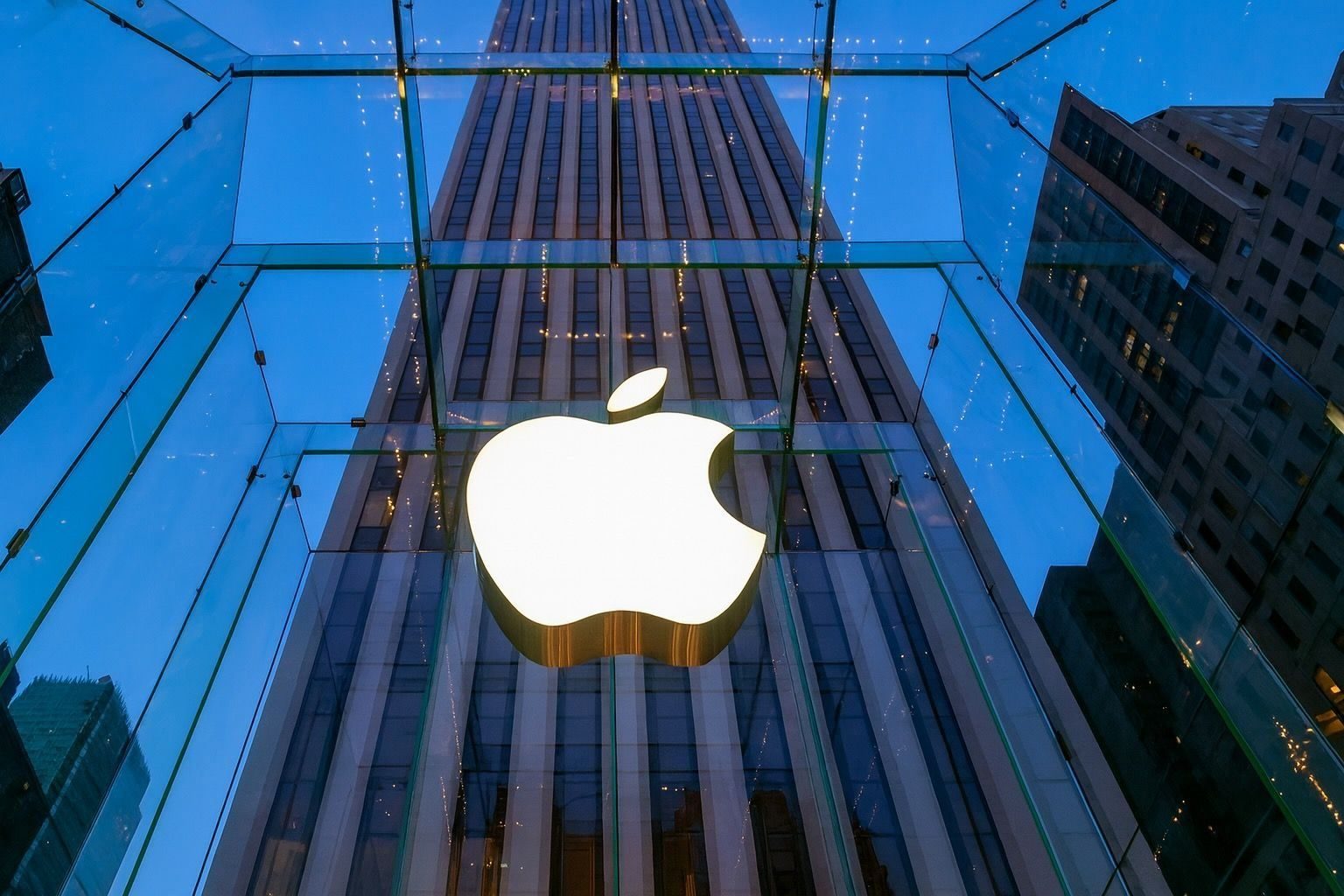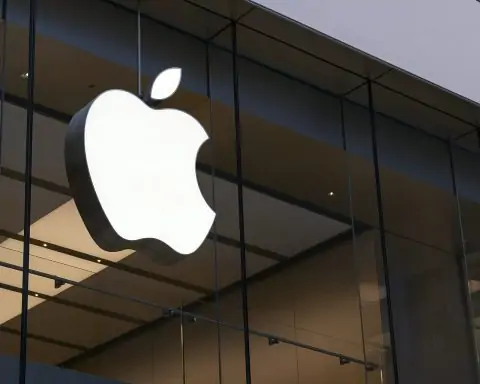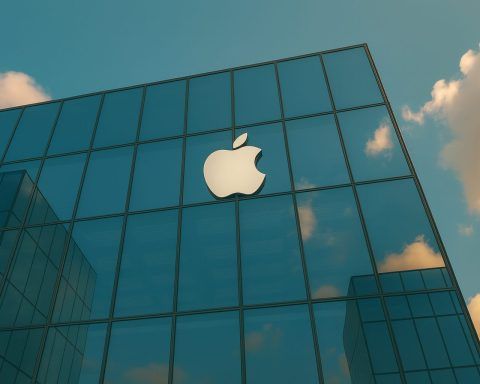Dateline: Sunday, November 23, 2025
Apple stock will open Monday’s session (November 24, 2025) sitting near record territory and carrying a mix of powerful tailwinds and fresh legal and regulatory risks that investors can’t ignore.
Here’s a comprehensive look at where AAPL stands after Friday’s close — and what’s most likely to drive the stock when U.S. markets reopen tomorrow.
1. Where Apple Stock Stands Before Monday’s Open
- Last close: Apple finished trading on Friday, November 21, at $271.49 per share, up about 2% on the day. [1]
- Market value: At that price, Apple’s market capitalization is around $4.0 trillion, making it the world’s most valuable or second‑most valuable public company depending on the day’s moves in Nvidia and Alphabet. [2]
- Technical setup: Investor’s Business Daily recently highlighted Apple as its Stock of the Day, noting that AAPL is trading inside a 5% buy zone after breaking out of a 42‑week consolidation with a buy point around $260.10. The stock closed at $271.49, within that buy range and above its 21‑day and 50‑day moving averages. A potential new entry level sits near $277.32, which would mark a fresh all‑time high. [3]
From a valuation standpoint, Apple is not cheap:
- The trailing P/E ratio is roughly 36, well above its 10‑year average near the low‑20s. [4]
- Forward P/E is around 32, implying investors are paying a premium multiple on expectations of double‑digit earnings growth. [5]
In other words, Apple is priced like a high‑quality, slow‑but‑steady growth compounder — and that premium only works as long as the growth story holds.
2. Q4 2025: Record Results Set a High Bar
Apple’s latest quarter (fiscal Q4 2025, covering the September quarter) is the foundation for current investor optimism.
Key headline numbers
According to Apple’s official earnings release and multiple summaries of the call: [6]
- Revenue: $102.5 billion, up 8% year over year – a September‑quarter record.
- Diluted EPS: $1.85, up 13% year over year on an adjusted basis.
- Full‑year revenue: About $416 billion, also a record.
- Dividend: Quarterly dividend of $0.26 per share, paid on November 13, 2025.
Segment performance (big picture)
Commentary from the earnings call and independent coverage gives the broad breakdown: [7]
- iPhone: September‑quarter revenue of roughly $49 billion, up about 6% year over year, driven by the launch of the iPhone 17 lineup (including the ultra‑thin iPhone Air).
- Mac: Revenue up around 13% year over year, helped by new M5‑equipped MacBooks.
- iPad: Essentially flat year over year.
- Wearables, Home, Accessories: Roughly flat overall, with strength in Apple Watch and AirPods offset elsewhere.
- Services: Quarterly revenue around $28.8 billion, an all‑time record for the segment.
Crucially, gross margin reached about 47%, near record levels, thanks in part to the high‑margin Services business. [8]
Holiday quarter guidance
Management guided for a very strong holiday period:
- Apple expects total company revenue to grow 10–12% year over year for the December quarter.
- iPhone revenue is projected to grow double digits, with CEO Tim Cook hinting this could be Apple’s best holiday quarter ever for both the company and the iPhone. [9]
- Services growth is expected to stay strong, at a similar pace to fiscal 2025, with gross margins in the 47–48% range even after about $1.4 billion in tariff‑related costs. [10]
Why this matters for Monday:
The stock’s near‑record price and rich valuation build on this guidance. Any new data that suggests Apple is not on track for that double‑digit holiday growth — especially around iPhone 17 demand or Services — could hit AAPL quickly.
3. China Rebound: iPhone 17 Is Doing Heavy Lifting
China has been the key worry for Apple for much of 2024–2025. Greater China revenue slipped in the September quarter, down a few percent year on year, even as other regions grew solidly. [11]
But fresh October data hints at a turnaround:
- Counterpoint Research estimates that iPhone shipments in China jumped 37% year over year in October, driven by the iPhone 17 lineup.
- One in four smartphones sold in China that month was an iPhone, giving Apple about 25% market share, its highest level since 2022.
- More than 80% of Apple’s phone sales in China are now from the iPhone 17 family, and higher average selling prices could boost revenue further. [12]
Analysts quoted in that research note that this supports Tim Cook’s recent comments that Apple expects China to return to growth this quarter. [13]
For traders on Monday:
Any weekend or early‑week data points on Chinese smartphone sell‑through — from local vendors, carriers, or research firms — will be closely watched. Confirmation of sustained momentum in China would support the bull case; signs of a one‑month spike followed by a fade would feed the bears.
4. Services Cross $100 Billion — and Step Into the Legal Spotlight
If iPhone remains the engine, Services is now the profit machine.
Services scale and growth
Multiple analyses based on Apple’s filings and third‑party estimates suggest: [14]
- Apple’s Services business is expected to generate around $108–109 billion in revenue for the year just ended — up roughly 13–14% year over year.
- That would be the first time Services tops $100 billion annually, making it a business on par with a Fortune 50 company by itself.
- Services now account for around 25–28% of total revenue but a far larger share of profits, with segment margins over 75%, versus mid‑30s for hardware.
That high‑margin, recurring revenue is a big reason investors are willing to pay a mid‑30s P/E for Apple.
Legal and regulatory headwinds
The flip side: Services — and particularly the App Store — sit at the center of Apple’s legal troubles.
Recent developments:
- European Union: In late October, two civil‑rights groups (Article 19 and Germany’s Society for Civil Rights) filed a fresh antitrust complaint with the European Commission, accusing Apple’s App Store terms and iOS restrictions of violating the Digital Markets Act (DMA) by limiting interoperability and third‑party app stores. Apple rejects the claims, arguing its rules protect users and developers. [15]
- United Kingdom: On November 13, a London tribunal refused Apple permission to appeal a landmark ruling that found it abused its dominant position by overcharging app developers via App Store commissions. Lawyers for the claimants estimate potential damages of over £1 billion, with a broader damages calculation reaching about £1.2 billion for users between 2015 and 2024. [16]
- China: A new complaint to China’s State Administration for Market Regulation argues that Apple’s iOS app distribution and in‑app payment rules constitute a monopoly, mirroring earlier cases in the U.S. and EU and asking regulators to act directly. [17]
- Web App Store: Under mounting pressure, Apple has expanded the App Store’s web presence, allowing more robust browsing and discovery in a browser, but still doesn’t allow full web‑based app installation or third‑party billing — a limited concession that may not fully satisfy regulators. [18]
Why this matters for AAPL:
- Services is the pillar behind Apple’s record margins and $4T valuation.
- Regulatory changes that force Apple to cut fees, open the platform or compensate users and developers could erode growth and margins in this segment over time.
- Any new enforcement action from the EU, UK, China or U.S. courts can quickly shift investor sentiment — and those headlines can break at any time.
5. The $634 Million Masimo Verdict: A Wearables Warning Shot
Another big overhang heading into Monday: the Masimo patent case.
What just happened
- A federal jury in California ruled that Apple’s Apple Watch infringed a Masimo patent related to blood‑oxygen monitoring (pulse oximetry) and ordered Apple to pay $634 million in damages. [19]
- Masimo has said the verdict covers tens of millions of Apple Watches that allegedly used its patented technology. [20]
- Apple has publicly disagreed with the decision and plans to appeal, which could delay any actual cash payout for years. [21]
This verdict lands on top of an earlier U.S. import ban on certain Apple Watch models with blood‑oxygen features, which Apple has partially navigated by disabling the feature in software on U.S. devices while continuing to sell the hardware. [22]
Financial vs. reputational impact
In pure dollar terms, $634 million is small versus Apple’s scale — the company generated about $27.5 billion in net income in the latest quarter alone and around $112 billion for the full year. [23]
But investors care because:
- It strengthens the narrative that Apple’s wearables business leans heavily on third‑party health‑tech IP.
- It may increase the risk of ongoing restrictions or redesigns of Apple Watch features in major markets, potentially slowing growth in a category that has been a key Services and hardware cross‑sell driver.
- It adds to the broader “legal risk discount” some analysts now apply to Apple’s multiple.
For Monday’s open:
Expect traders to watch for any follow‑up headlines — comments from Masimo, hints about settlement talks, or new moves by U.S. trade authorities regarding the import ban. Rapid clarification that Apple can continue selling watches with minimal changes would ease worries; any sign of expanded restrictions would not.
6. Holiday Catalysts: Black Friday, Apple TV+ and the Services Flywheel
The next big near‑term catalyst for Apple isn’t an earnings report — it’s holiday spending, which kicks off in force this week.
Apple’s own Black Friday event
Apple has confirmed its annual four‑day shopping event running from November 28 to December 1, offering Apple Gift Cards up to $250 with the purchase of eligible products such as MacBook Pro, MacBook Air, iPad Air, Apple Watch, AirPods and more. [24]
Notably:
- The newest flagship devices like the iPhone 17 lineup and M5‑based MacBook Pro models are typically excludedfrom direct discounts, but the broader ecosystem still benefits from elevated traffic and attach‑rate of services and accessories. [25]
Third‑party retailers are cutting prices harder
Retailers such as Amazon, Best Buy and Walmart have already rolled out aggressive Apple hardware discounts, including record‑low prices on AirPods, Apple Watch, iPads and MacBooks. [26]
This matters because:
- Heavy discounting can pull forward demand into Q4 and Q1.
- Strong unit sales in devices like AirPods and Apple Watch often translate into higher‑margin Services revenuelater (Music, Fitness+, iCloud, etc.).
Streaming and services promos
Apple is also pushing services:
- A limited‑time Apple TV+ promotion offers six months at a steep discount for new or returning subscribers, aimed at bolstering engagement as Apple TV continues to rack up high‑profile shows and sports coverage (including upcoming Formula 1 rights). [27]
For AAPL on Monday:
Investors aren’t trading on exact Black Friday numbers yet, but commentary from retail analysts, channel checks and early “best‑seller” lists can quickly feed into expectations for the December quarter — especially around iPhone 17, AirPods and Apple Watch volumes.
7. AI, “Apple Intelligence” and the Growth Narrative
One of the biggest over‑the‑surface worries for Apple in 2025 has been AI leadership. While Nvidia, Microsoft and Alphabet have been front and center in the AI boom, Apple has been seen as a late mover.
Recent signals:
- Tim Cook has emphasized that Apple is investing heavily in AI, with operating expenses expected to rise to about $18.1–$18.5 billion next quarter in part because of increased AI R&D. [28]
- Apple’s “Apple Intelligence” initiative is integrating ChatGPT into Siri and exploring additional partnerships with models like Google Gemini, Anthropic and Perplexity. A more deeply AI‑enhanced Siri is expected in 2026. [29]
This story matters for valuation:
- Bulls argue that Apple’s installed base and on‑device processing position it to monetize AI quietly through higher‑end hardware and sticky services.
- Bears counter that AI leaders elsewhere will capture more value, and that Apple’s growth relies too heavily on incremental hardware cycles plus already‑mature Services.
Any Monday commentary from analysts or media that upgrades or downgrades Apple within the broader “AI trade” can move the stock even without new hard data.
8. Street Sentiment: Premium Valuation, Divided Views
Analysts remain constructively split on AAPL:
- Some valuation‑focused research notes describe Apple as the most expensive and slowest‑growing of the mega‑cap tech giants, arguing that a mid‑30s P/E is hard to justify if revenue growth stays in high single digits. [30]
- Others highlight Apple’s resilience through AI‑driven volatility in tech, pointing to its cash generation, buybacks, and ecosystem strength as reasons the premium can persist. [31]
TipRanks data, for example, shows a “Moderate Buy” consensus with a cluster of Buy and Hold ratings, an average price target in the high‑$280s and implied upside of high single digits from current levels. [32]
Investor’s Business Daily likewise frames Apple as technically healthy — above key moving averages, in a buy zone, and seen by some as a safer way to ride consumer tech into the holidays despite AI sector turbulence. [33]
9. What to Watch When Markets Open on Monday, November 24
When the bell rings tomorrow, these are the key Apple‑specific drivers likely to influence AAPL’s direction:
- Pre‑market and early trading vs. the Nasdaq 100
- Is Apple outperforming or lagging other mega‑cap tech names? Given its enormous weight in major indices, broad tech risk‑on/off moves will matter.
- Follow‑through on the Masimo verdict
- Any analyst notes quantifying the risk of additional damages, a potential settlement range, or an expanded Apple Watch import ban.
- Headlines from Masimo or regulators could quickly swing sentiment on wearables.
- New headlines on App Store regulation
- Updates from the EU on DMA enforcement, the UK damages process, or Chinese regulators could signal whether Apple faces mere fines or deeper changes to its business model.
- China iPhone datapoints
- Any weekend research snippets on iPhone 17 sell‑through, wait times, or promotional intensity in China and key global markets.
- Early holiday spending commentary
- Retail checks and online best‑seller lists highlighting iPhone 17, AirPods 4/Pro 3, Apple Watch Series 11 and Apple TV promotions. Strong reads would reinforce Apple’s bullish holiday guidance.
- Macro and AI‑trade sentiment
- Moves in Nvidia, Alphabet, Microsoft and broader AI names will influence how investors treat Apple: as a relative safe haven, or a richly priced giant to rotate out of.
10. Bottom Line: Apple Stock Is Priced for a Near‑Perfect Holiday
Heading into Monday, Apple is:
- Near record highs at $271.49. [34]
- Valued around $4 trillion, with a P/E in the mid‑30s — a clear premium to its history. [35]
- Backed by record earnings, surging iPhone 17 demand and a Services business over $100 billion in annual revenue. [36]
- Confronting escalating legal and regulatory pressure on the App Store and a high‑profile $634 million patent verdict on Apple Watch. [37]
For short‑term traders, Monday’s open will be about whether the market focuses more on holiday momentum and China’s rebound — or on legal clouds and valuation risk.
For longer‑term observers, the bigger question is whether Apple can keep growing earnings fast enough — through iPhone 17, Services, and AI‑driven features — to sustain a valuation normally reserved for faster‑growing tech names.
Important Disclaimer
This article is for informational and news purposes only. It does not constitute financial, investment, tax or legal advice, and it is not a recommendation to buy, sell, or hold any security. Always consider your own financial situation, objectives and risk tolerance, and consult a licensed financial adviser before making investment decisions.
References
1. finance.yahoo.com, 2. stockanalysis.com, 3. www.investors.com, 4. fullratio.com, 5. www.financecharts.com, 6. www.apple.com, 7. www.macrumors.com, 8. www.macrumors.com, 9. www.macrumors.com, 10. www.macrumors.com, 11. www.macrumors.com, 12. www.tipranks.com, 13. www.macrumors.com, 14. www.macrumors.com, 15. www.reuters.com, 16. www.reuters.com, 17. www.macrumors.com, 18. marketingtrending.asoworld.com, 19. www.reuters.com, 20. www.dailyjournal.com, 21. www.insurancejournal.com, 22. www.techradar.com, 23. www.ft.com, 24. www.apple.com, 25. www.techradar.com, 26. www.techradar.com, 27. www.macrumors.com, 28. www.macrumors.com, 29. www.theverge.com, 30. seekingalpha.com, 31. moneyweek.com, 32. www.tipranks.com, 33. www.investors.com, 34. finance.yahoo.com, 35. stockanalysis.com, 36. www.investopedia.com, 37. www.reuters.com










